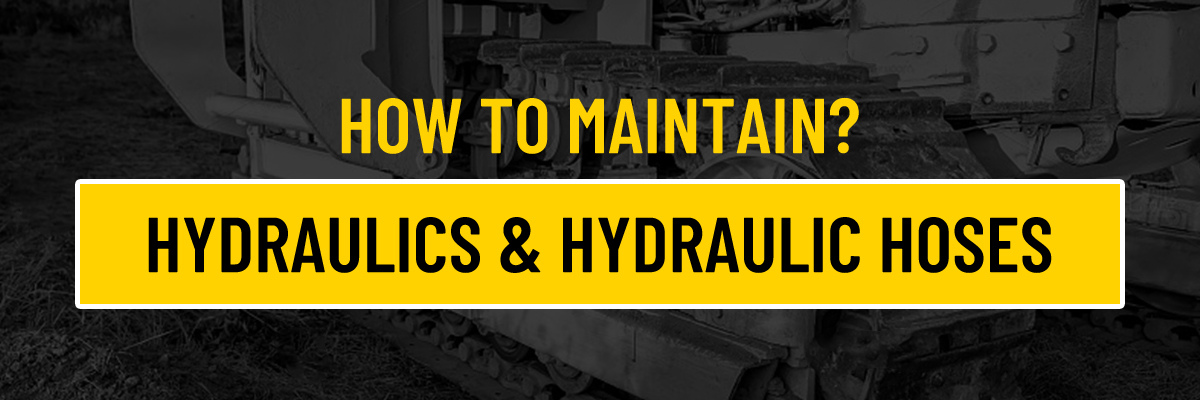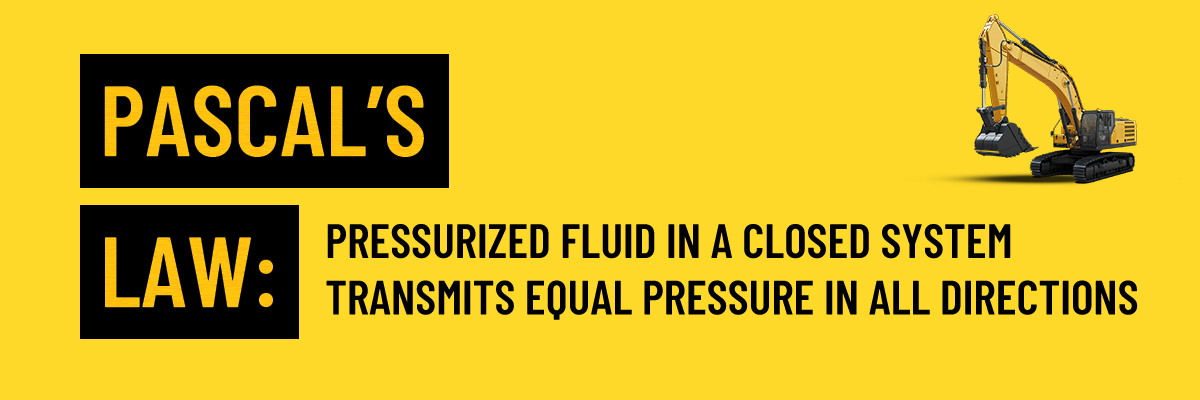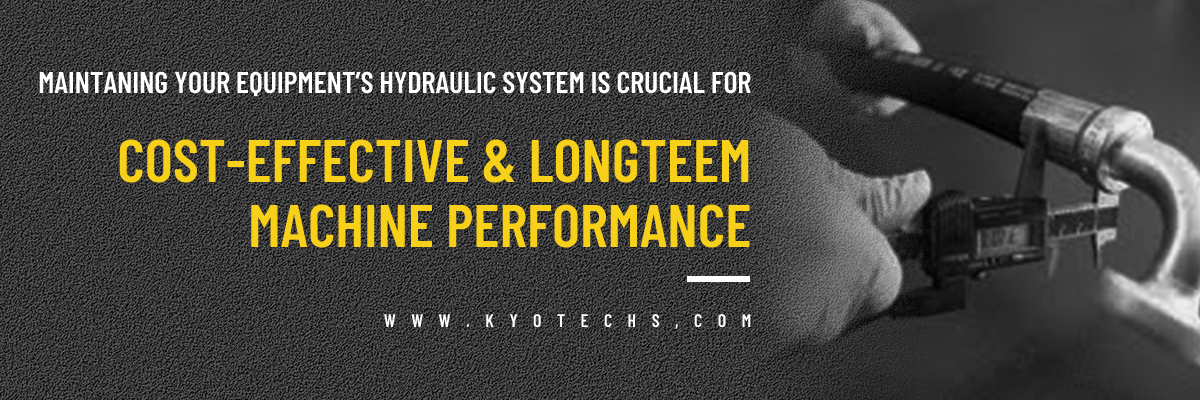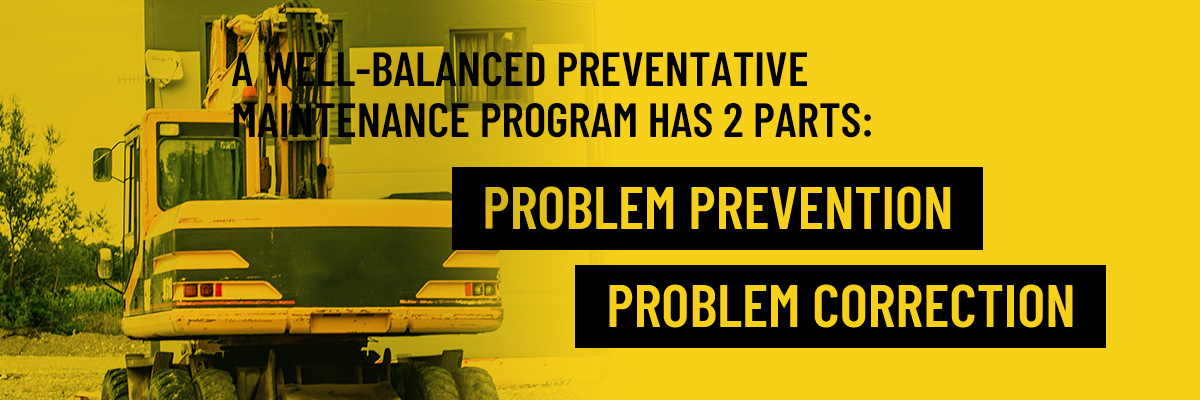How to Maintain Hydraulics and Hydraulic Hoses?
Learn essential tips from Kyotechs on maintaining hydraulics and hydraulic hoses. Discover how to extend the life of your equipment with proper care and maintenance techniques. Optimize performance and prevent costly repairs with our expert advice.
- Overview of Hydraulic Systems
- Hydraulic System Failures
- Routine Hydraulic System Maintenance and Inspections
- Hydraulic Component Replacement Considerations
- Tips to Extend the Life of Hydraulic System Components
- 1. Hydraulic Pumps:
- 2. Hydraulic Cylinders:
- 3. Hydraulic Lines:
- 4. Hydraulic Hoses:
- 5. Hydraulic Tanks:
- 6. Hydraulic Filters:
- 7. Hydraulic Fluid:
- Hydraulic Fluid Analysis
- Importance of a Clean Hydraulic Service Environment
- Preventative Maintenance on Hydraulic Components at Kyotechs Machinery
If you own or operate heavy equipment, you know that a properly functioning hydraulic system is critical. You rely on hydraulic system components to dig, lift, and move materials. And you need a properly functioning hydraulic system to maneuver your equipment.

The hydraulic systems in today's machinery are complex. They are reliable as long as you perform comprehensive hydraulic maintenance and regular hydraulic inspections. These maintenance tasks include carefully inspecting hydraulic hoses, regularly changing hydraulic filters, and regularly analyzing hydraulic fluid.
But maintaining a hydraulic system is more than just hoses, filters, and hydraulic fluid. You need a comprehensive preventive maintenance program for your hydraulic system. Let's take a look at what you can do to ensure your equipment's hydraulic system is always in working order.
Overview of Hydraulic Systems
Modern hydraulic systems utilize torque multiplication from an electric motor and convert mechanical energy into fluid energy through a pump. Pressurized oil moves from the pump through a closed line into an expansion cylinder to work. Hydraulic theory and practice are based on Pascal's law, which states that a pressurized fluid in a closed system transmits the same pressure in all directions.

The hydraulic system of a modern excavator, bulldozer, motor grader, or skid steer loader operates on the closed loop or closed principle. Despite the increasing sophistication of today’s hydraulic components, they rely on the same basic concepts as older technology. Here’s an overview of the common components found in today’s heavy equipment hydraulic systems:
• Hydraulic motors: The primary source of power for most heavy equipment is a diesel engine. They use heat to convert the energy stored in petroleum products into mechanical energy. Hydraulic systems use the machine’s engine to drive a pump, which pressurizes the fluid.
• Hydraulic pumps: Hydraulic system pumps pressurize a fluid called hydraulic oil. Hydraulic pumps pressurize the fluid instead of compressing it as in pneumatic systems. Pressurized hydraulic oil retains its mass but has a higher energy level.
• Hydraulic tank: Every hydraulic system requires a reservoir to store the hydraulic oil. This container, called a tank, is used to store non-pressurized reserve hydraulic oil. The size of the tank varies depending on the size of the machine and the capacity required.
• Hydraulic controls: The valves that control the pressurized hydraulic oil are essentially the “brains” of the hydraulic system. A typical earthmoving machine has many valves that are controlled by the operator. These controls control flow, regulate flow, and compensate for pressure.
Hydraulic Lines: Lines carry pressurized hydraulic fluid from the pump to the working cylinders. Hydraulic line systems are made up of lines, hoses, fittings, connections, and seals.
• Hydraulic Actuators: Once the lines carry pressurized hydraulic fluid, actuators convert the hydraulic energy back into mechanical energy. Most equipment operators and service technicians refer to actuators as "cylinders." These cylinders move booms, actuate sticks, and operate buckets.
• Hydraulic Oil: Most hydraulic oils are petroleum-based. It is critical to keep hydraulic oil free of contamination. Dirty oil is harmful to hydraulic components.
• Hydraulic Filters: Filters help keep your hydraulic system clean. Many hydraulic components have multiple filters in strategic locations. The right filters are critical to your equipment's hydraulic health.

Maintaining your equipment's hydraulic system is essential to achieving cost-effective and long-term machine performance. Maintenance takes time and attention to detail. Those details include fluid contamination, which is the leading cause of hydraulic system failure.
Hydraulic System Failures
The leading cause of all hydraulic system failures is fluid contamination. Hydraulic system failures due to fluid contamination are more threatening for earthmoving equipment, as they are constantly exposed to dust and debris.
Contamination comes in many forms and can enter hydraulic systems in a variety of ways. Here are the main forms of contaminants that can damage hydraulic systems and cause system failures:
• Invasive contamination: If you work with earthmoving machinery, these contaminants are unavoidable. Your hydraulic system will inhale dust from the air, direct contact with minerals, and even organic contaminants. To minimize the damage caused by invasive contamination, you need to pay close attention to maintenance.
• Catalytic contamination: Non-solid contaminants can also threaten the health of your hydraulic system. The main culprits are water and air, as well as thermal stress. Water and air can contain microscopic contaminants, such as iron and copper, which react with particles in the hydraulic fluid, causing catalytic effects and wear.
• Generated contamination: It's a vicious cycle. Small contaminant particles gradually turn into larger particles. Over time, they continue to grow, eventually leading to increased contamination that seriously affects your hydraulic system.
• Natural contamination: Some new oils can contain contaminants, which naturally accumulate in the oil over time. To avoid this problem, be sure to purchase quality products from a reputable supplier and change your hydraulic fluid regularly.
• Built-in contamination: Some contaminants are built into the equipment. Trace amounts from the manufacturing process are always present and are completely unavoidable. Examples include manufacturing debris, assembly contamination, weld spatter, foundry sand, paint dust, and even cleaning rag fibers.
Many sources of contamination can threaten your hydraulic components. The heavy equipment industry is a constant source of wear and tear.
All hydraulic equipment has a calculated service life. Some components are designed to last until they are scrapped. Other hydraulic systems fail prematurely, often due to a lack of preventive maintenance.
Some hydraulic failures are merely inconvenient, while others can be catastrophic. A successful preventive maintenance program can reduce the rate of failures and minimize the cost of any failures. Here are three common levels of hydraulic failures in the heavy equipment industry:
1.Degraded failures: All mechanical equipment will eventually degrade and fail, including well-maintained hydraulic systems. The key to managing degraded failures is to monitor components and repair or replace them before they fail.
2.Transient failures: Hydraulic components occasionally fail. When they occur, they transfer stress to other components and increase the risk of their own failure. This process is called transient or progressive failure.
3.Catastrophic failure: Some hydraulic failures appear to occur without warning. For example, a hose may suddenly burst and spray gallons of oil.

With a straightforward preventive maintenance program, you can significantly reduce your hydraulic failure rate. By following a few simple steps, you can detect performance degradation failures at an early stage, delay transient failure events, and avoid catastrophic failures. Start with regular hydraulic system maintenance and inspections.
Routine Hydraulic System Maintenance and Inspections
Preventive maintenance is essential to keeping your hydraulic system efficient and reliable. Maintaining your hydraulic system prevents premature failures that occur unexpectedly. Preventing failures reduces repair costs, minimizes unplanned downtime, and increases profitability.
Equipment maintenance is an ongoing process that requires continuous investment. You need to develop a routine plan that includes pre-operation and post-operation inspections, as well as scheduled maintenance. A good preventive maintenance program has two main parts:
• Problem prevention: Maintaining your hydraulic system and preventing problems requires understanding your equipment and the maintenance it requires. You can find helpful maintenance information in your owner's manual. Take the time to learn the guidance of the engineer who designed your equipment.
• Problem Correction: As soon as you discover a potential problem, always take corrective maintenance action. Don't wait until a defect occurs to repair or replace hydraulic components.

To save time and money, it is important to develop a routine preventive maintenance plan for your hoses and hydraulic system. Here are some tips for implementing such a plan:
• Know what the plan covers: The first step in developing a routine maintenance plan is to know what it covers. Generally, all maintenance or inspection plans cover three areas - scheduled maintenance, regular inspections, and proactive parts replacement.
• Schedule Inspections: The next step is to schedule your routine and preventive maintenance activities. Plan separate schedules for scheduled maintenance, routine inspections, and parts replacement. Consult your owner's manual and get expert advice from your dealer on how often to schedule preventive maintenance and inspection activities.
• Record Maintenance Activities: All inspections, maintenance, or service activities should be recorded in one place. If you own multiple machines, each machine will need a separate record. Recording maintenance and inspection activities helps you take responsibility for preventive maintenance and helps you get in the habit of prioritizing preventive maintenance and inspections.
• Designated Responsible Person: Any preventive maintenance or routine maintenance program is incomplete without a designated responsible person. The responsible person for maintenance and inspections depends on the size of the company, but it should always be the person who is most familiar with the equipment.
Another aspect of an effective preventive maintenance program is analyzing the cause of any wear or defects. If you determine the cause of the problem, you will be better able to prevent similar problems from happening in the future.
Hydraulic Component Replacement Considerations
Determining when to replace hydraulic components can be challenging. Knowing the warning signs to watch for can help. As you gain experience maintaining your equipment, you'll get better at identifying and interpreting these signs. Some of the signs you need to watch for include:
• Hydraulic fluid discoloration: If you notice that your hydraulic fluid suddenly changes color, consider this a red flag. It's normal for the fluid to change color as it ages. However, if a milky or bubbly appearance develops, it's a sign that the hydraulic fluid has been contaminated by water or air. Stop work immediately until the problem is resolved.
• Hydraulic fluid leaks: A healthy hydraulic system shouldn't have leaks. If you notice stains or fluid accumulation, look for the cause as soon as possible. Small leaks can quickly turn into big problems.
• Aging hydraulic lines: Any signs of wear on the hydraulic lines indicate that it's time to stop work and perform repairs. This includes the entire hydraulic line subsystem, including lines, hoses, seals, connections, and fittings. In this closed system, worn parts can burst without any warning, other than minor signs of wear.
• Hydraulic component fatigue: To find fatigued parts, check for symptoms such as looseness and cracks. Remember, your hydraulic system operates under pressure, and tired parts rarely stand up to much stress.
• Corrosion of hydraulic components: Rust is the mortal enemy of hydraulic systems. Moisture exacerbates corrosion and can quickly eat away at the metal parts of your hydraulic system. Check fasteners and connections for signs of reddish-brown stains, which indicate corrosion has begun and is compromising the integrity of the system.
• Hydraulic system noises: All operating hydraulic systems make noises. With experience, you'll learn the sounds of a healthy hydraulic system. You'll also know when something sounds wrong and needs immediate attention.
• Hydraulic system odors: Hydraulic system odors can help you spot a malfunction. Burnt oil and overheated parts can be smelled immediately. Stop work immediately and check to see where the odor is coming from.
• Hydraulic control changes: When the behavior of a hydraulic control changes, you or the operator will know something is wrong. Hydraulic controls are vibrating extensions that constantly send signals to your hands and feet. Any unusual control pattern is like a reminder to check which component is out of order.
If you have experience operating heavy equipment, you'll know when something is wrong. The trick is to keep watching for problems—and that’s what a preventive maintenance program is all about.
No matter how thorough your preventive maintenance program is, it’s easy to miss some issues. Some problems are right in front of you, and you may not even notice them. Here are some tips to help you find problems that are often invisible and extend the life of your hydraulic system components.

Tips to Extend the Life of Hydraulic System Components
Extending the life of hydraulic system components is a core goal of any preventive maintenance and corrective action program. It goes without saying that catching problems early can provide a huge return on your investment of time and money. Learn these practical tips that are sure to extend the life of your hydraulic components.

1. Hydraulic Pumps:
• Watch for unusual or sudden noise changes in the housing.
• Watch for vibrations in the pump drive and brackets.
• Inspect the hydraulic pump for signs of overheating or high temperatures.
2. Hydraulic Cylinders:
• Watch for rust on the cylinder liner, a telltale sign of moisture corrosion.
• If possible, retract the machine’s cylinder barrel for storage.
• Inspect the cylinder barrel for signs of wear that indicate side loading.
3. Hydraulic Lines:
• Check metal lines for loose fittings and couplings.
• Tighten before replacing or repairing leaking fittings.
• Make sure seals are intact.
4. Hydraulic Hoses:
• Check flexible hoses for routing and kinks.
• Watch for blisters and replace if worn.
• Make sure hoses are the right size for their specific needs.
5. Hydraulic Tanks:
• Always keep hydraulic tanks full to reduce condensation.
• Tanks can vibrate loose, so always check connections.
• Keep tanks sealed during operation and only open in a clean environment.
6. Hydraulic Filters:
• Always buy filters designed for your system.
• Never risk using inferior or “wholesale” hydraulic oil filters.
• Never change hydraulic fluid without a new filter installed.
7. Hydraulic Fluid:
• Purchase high-quality hydraulic fluid made specifically for your system.
• Pay special attention to any suspicious substances found in the oil.
• Have your hydraulic fluid analyzed regularly by a certified laboratory.
Having a professional lab analyze your hydraulic fluid is an economical and high-return investment. Hydraulic fluid is the lifeblood of your system, and you need to ensure it is as healthy as possible. A comprehensive fluid analysis is a maintenance measure that should not be overlooked.
Hydraulic Fluid Analysis
Testing your hydraulic fluid isn’t just smart, it’s easy. Performing this simple test routine regularly can detect trace contaminants that you otherwise wouldn’t be able to detect.
Hydraulic fluid analysis provides immediate early detection of hydraulic system problems. Get hydraulic system health warnings, giving you time to schedule repairs without interrupting your workflow. Fluid analysis also monitors positive indicators, giving you peace of mind that your equipment is healthy.
Hydraulic fluid analysis is a simple process. Simply send your fluid to a lab following the prescribed collection instructions, and you’ll get a report. Fluid analysis includes the following tests:
• Fluid Wear Rate Analysis: This test is designed to detect trace metal or wear element particles in the hydraulic fluid. Metal is a sure sign of component wear. This indicates that you need to inspect the parts that are wearing out.
• Fluid Cleanliness Analysis: Dirt is fluid’s worst enemy. Cleanliness analysis identifies hidden mineral contaminants such as dust, soot, and chemical compounds in hydraulic fluid. This test can tell you if you need to change your fluid right away, or if you still have time to do so.
• Fluid Condition Analysis: There is a difference between condition and cleanliness. Condition analysis can reveal impurities at the microscopic level. Even if your fluid appears clean, these contaminants, including oxidation, nitration, and sulfur byproducts, can still cause serious problems.
Fluid must be clean for other hydraulic components to function properly. Cleanliness is critical to hydraulic performance, and having a clean hydraulic service environment is equally important.
Importance of a Clean Hydraulic Service Environment
There are risks in servicing your machine's hydraulic system in the field. An open and uncontrolled environment exposes all hydraulic components to dust and moisture, which pose significant threats to unprotected hydraulic components. Your machine will be better served by having your machine's hydraulic system serviced by a repair shop.
At Kyotechs Machinery, we understand that cleanliness is critical to the long-term performance of your hydraulic system. Since opening our first Caterpillar dealership in Indiana in 1945, we have been known for our premier repair service. While we offer convenient on-site service for Cat® heavy equipment, we strongly recommend that you perform hydraulic system maintenance in our repair shop.
Preventative Maintenance on Hydraulic Components at Kyotechs Machinery
Kyotechs Machinery is a full-service sales, maintenance and repair organization. We have the facilities, equipment and expertise necessary to maintain all hydraulic systems and hydraulic hoses in a clean environment. We also perform hydraulic fluid testing and assess the condition of your hydraulic system. Contact Kyotechs Machinery today for comprehensive hydraulic service.

What are some maintenance tips for excavator cabs?

What are the solutions for excavator steering failures?

What causes plunger pump failures? What do plunger pumps work?

What is the reason why the excavator hydraulic pump makes abnormal noise?
FAQS
What parts you have?
We are specialized in excavator spare parts, such as travel motor gearbox assy & parts, swing gearbox motor assy & parts, and hydraulic pump motor assy and spare parts. If any are needed, we can also supply them as per your requirements.
Do you only sell or repair?
Yes, we sell parts and have a repair team to offer support.
1. Software solution.
A. ECU & Monitor Reprogram
B. DPF Program Solution
C. Software refit
2. Engine Rebuild & Testing
Maintenance Team Support
A. ET for Caterpillar Diagnosis
B. Inline 6 for Cummins/Komatsu/Hyundai Diagnosis
C. IDSS for Hitachi/Isuzu/Case/Sany/Sumitomo/JCB/XCMG/Isuzu Truck Diagnosis
D. DX2/NEXIQ for Kobelco/Hino truck Diagnosis
E. Vocom for Volvo/Volvo truck/Penta Diagnosis
F. DST-i for KUBOTA DENSO Diagnosis
3. hydraulic Remanufacture & Testing
A. Offer new or rebuilt hydraulic pump & motor
B. Control valve & main pump repair & rebuild knowledge
C. Offer stable and cheap hydraulic test machines
D. All rebuild valves, pumps, and motors offer testing video for cilent
If i don'thave part number, can you check for me?
Yes, excavator model, old photos, and size are also available to confirm the correct parts you need.
Which shipping term you can supply?
By sea, air or by express ( DHL, Fedex, TNT, UPS, EMS)
How long does it take to my address?

Excavator Spare Parts 4M50 Engine Assembly For Sany SY215

Excavator parts 708-2J-00030 Hydraulic Main Pump For Komatsu PC500LC-10R

Excavator Spare Parts YB60001906 Travel Gearbox For Hitachi EX1200-7 EX1200-6

Excavator parts 21P-60-K1502 Hydraulic Main Pump For Komatsu PC150LC-6K

Excavator Spare Parts 515-0070 Travel Gearbox For Caterpillar E330D2

Excavator Spare Parts 480-6768 Travel Gearbox For Caterpillar E320D2

Excavator Spare Parts 353-0562 Travel Gearbox For Caterpillar E336D



Kyotechs
Kyotechs GZ
Kyotechs
Kyotechs